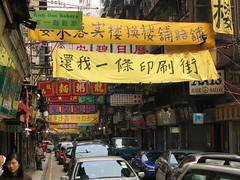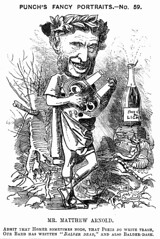CUS 325C Seminar in Current Cultural Issues: Cultural Geography
Instructor: IP Iam Chong (chong@ln.edu.hk)
Tue 11:30-13:00
Thu 13:30-15:00
Assessement
1. Take-home examination (30%)
2. Online writing (35%)
-Writings (20%): Each student is required to contribute articles (two before the end of March and two before the end of April; about 1,000 words each) to the online magazine (spaceculture.blogspot.com).
-Please learn how to use blog and upload the articles (and photos, if necessary) by yourselves.
-Among the four articles, two are written assignments, one is news reporting on a particular issue or event and one may be a commentary (More guidlines will be provided).You are strongly encouraged to submit more than four articles.
-Late submission is not allowed. Each article carries 5% of total assessment.
-Participation in online discussion (15%): You are required to respond to others' articles and comments. You will lose 15% of the total assessment if you don’t make any comment at all.
3. Presentatioin and discussion (35%)
Schedule
Jan 25
Briefing
Jan 27
I. Theoretical orientations (lecture)
Feb 1
Presentation IA (Introduction)
*陳冠中2004<香港作為方法>及<香港對照記--台北這個城市的好> 《文化起義》香港:CUP
Jackson, Peter. 1989. "Problems and alternatives." Maps of Meaning. London and New York: Routledge, pp. 25-46.
Feb 3
Presentation IB (Redefining "space")
Foucault, Michel. 1980(1976) "Questions on geography." Power/ Knowledge: Selected interviews & other writings 1972-1977. Edited by Colin Gordon. NY: Pantheon.
*Foucault, Michel 1994(1982). "Space, Knowledge and Power." In Power: Essential Works of Foucault 1954-1984. Edited by James D. Faubion. NY: The New Press.
Feb 15
II. Experience, part I (lecture)
Feb 17
Experiment in campus and discussion
Feb 22
Presentation IIA (Home)
Korosec-Serfaty, Perla and Dominique Bolitt. 1986. "Dwelling and the experience of burglary." Journal of Environmental Psychology. 6, 329-344.
*畢恒達2004<先生不在家,我才有在家的感覺>、<設計分性別?>《空間就是性別》台北:心靈工坊,84-119; 180-214。
Mar 1
Presentation IIB (Senses of place)
*Tuan, Yi-Fu. 1977. "Space, place and the Child." Space and Place: The Perspectives of Experience. Minneapolis: University of Minnesota Press, pp. 19-33.
Lynch, Kevin. 1991(1976). Managing the sense of a region. Cambridge: The MIT Press, p. 1-38.
Mar 3
Presentation IIC (Experience in public and commercial space)
Jackson, Peter. 1998. "Domesticating the street: the contested spaces of the high street and the mall." Images of the street: planning, identity and control in public space. London and New York: Routledge.
*Lui, Tai-lok. 2001. “The Malling of Hong Kong.” Consuming Hong Kong. Edited by Gordon Mathews and T. L. Lui. Hong Kong: Hong Kong UP.
Mar 8
II. Experience, part II (lecture)
Supplementary readings
黃國鉅<港人走出來的街巷>《明報》2004.12.5
俞若玫<我們沒有了自己!——馬國明的行街政治>《明報》2004.11.25
葉蔭聰<虎地:凌空拔起的慾望>2004.11.19 In-media
(同學習作)黃拱章, 嚴美欣, 嚴詩敏<六四吧短片導讀>2004.12.2
周思雅<灣仔口述:商舖篇>2004.10.28
Mar 10
III. Representation, part I (lecture)
Mar 15
Presentation IIIA (Experience and represenation)
*Benjamin, Walter. “Paris, capital of the nineteenth century.” Reflections. NY: Schocken Books, 1978, 146-62.
Sennet, Richard. 1994. "Body and City." and "Nakedness: The Citizen's Body in Perikles' Athens." Flesh and Stone: the Body and the City in Western Civilization. New York: W. W. Norton, 14-67.(中譯)
Mar 17
Presentation IIIB (Urban landscape)
*Twombly, Robert. 1995. "The Social Transformation of Modernism, 1922-1940." (51-71), "Hegemonic Modernism, 1940-1970s." (72-88) In Power and Style: A Critique of Twentieth Century Architecture in the United States. New York: Hill and Wang.
Kostof, Spiro. 1991. "The Grand Manner." The City Shaped: Urban patterns and meanings through history. Boston: A Bulfinch Press Book, 209-277.
Mar 29
III. Representation, part II (lecture)
Mar 31
IV. Lived Relation, part I (lecture)
Apr 7
Presentation IVA (Everyday life)
*吳鄭重2004<「菜市場」的日常生活地理學初探:全球化台北與市場多樣性的生活城市省思>《台灣社會研究季刊》第五十五期2004年9月,頁47-99。
Hannigan, John. 1998. ""At prices all can afford": The "golden age" of popular urban entertainment in America." London and New York: Routledge, pp. 15-30.
Apr 12
Presentation IVB (Public space)
*Zukin, Sharon. 1995. "Whose Culture? Whose City?" In The Cultures of Cities. NY and London: Blackwell, 1-48.
魯道夫.迪.瓊(Rudolf de Jong)1995(1986)<再次俘獲街道?>《空間與社會理論譯文選之一》台北:台大城鄉所。
Apr 14
Presentatiion IVC (Spatial tactics)
Borden, Iain, Joe Kerr, Jane Rendell and Aicia Pivaro. 2002. "Things, Flows, Filters, Tactics." The Unknown City. Cambridge and London: MIT Press, pp. 2-28.
*Borden, Iain. 1998. <滑板玩家:當代城市中又激進又反叛的市民>《城市與設計》第七、八期,頁25-44。
Apr 19
IV. Lived Relation, part II (lecture)
Apr 21
Social Relations (lecture)
Apr 26 (Modernity)
*David Harvey. 1989. "14. Time and space as sources of social power.", "15. The time and space of the Enlightenment project." In The Condition of Postmodernity. Oxford: Blackwell, pp. 226-259.
Massey, Doreen. <政治與空間/時間>《空間與社會理論譯文選》王志弘編,台北,頁115-142。
Apr 28 (Counter-spaces)
Foucault, Michel. 1967. "Of Other Spaces."
*黃孫權2000<重回街道:一個瑞舞文化與搖頭丸政治之空間觀察>
May 3 (Global culture)
*阿佩杜懷(Arjun Appadurai)<全球文化經濟中的斷裂及差異>《身份認同與公共文化:文化研究論文集》陳清僑編,香港:牛津大學出版社,65-82。
Kahn, Joel. 1995. "A World System of Culture?" Culture, Multiculture, Postculture. London: Sage, pp.124-156.
May 5
Conclusion (lecture)
* Required Reading
References
Urban Design Skills: Observing, Interpreting and Representing the City
Cultural Geography (culturalgeography.blogspot.com)
Johnston, R. J., Derek Gregory, Geraldine Pratt and Michael Watts. 2000. The Dictionary of Human Geography, 4th Edition. Malden Blackwell.



